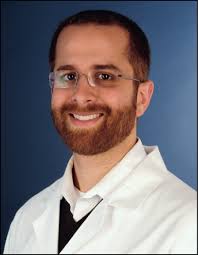12 Aug Penn Developed Sarcoidosis Score Reliably Measures Disease Activity
 MedicalResearch.com Interview with:
MedicalResearch.com Interview with:
Misha A. Rosenbach, MD
Assistant Professor of Dermatology at the Hospital of the University of Pennsylvania
Assistant Professor of Dermatology in Medicine
Medical Research: What is the background for this study? What are the main findings?
Dr. Rosenbach: Sarcoidosis is an inflammatory disease of unknown etiology where genetically susceptible patients develop multi-organ granulomatous inflammation in response to an as-yet unidentified stimulus. Patients with sarcoidosis typically have granulomatous inflammation in their lungs, but the second most commonly affected organ is the skin; the eyes, lymph nodes, liver, heart, brain, and other organs can be affected as well. Patients with sarcoidosis can experience a few disease trajectories; some spontaneously recover, while others have persistent, active inflammation, whereas another group can experience inflammation which leads to scarring and fibrosis. It can be challenging to distinguish these cohorts of patients based on their lungs alone.
The skin is much easier to evaluate, as it is right there on the surface, and can be examined by physicians without resorting to invasive tests or radiography. At Penn, we developed a novel cutaneous sarcoidosis assessment tool, called the Cutaneous Sarcoidosis Activity and Morphology Instrument (CSAMI), which is designed to accurately measure how inflamed skin sarcoid lesions are in a given patient, as well as describing which type of cutaneous lesion patients’ have. The CSAMI has in previously studies been shown to be reliable when used by dermatologists, with excellent inter-rater and intra-rater reproducibility.
In this study, we had a group of Pulmonologists, Rheumatologists, and Dermatologists (representing the groups of physicians who most commonly care for patients with sarcoidosis, especially if there is skin involvement) evaluate a group of patients with cutaneous sarcoidosis, using the CSAMI and another sarcoidosis activity instrument, the SASI, which has also previously been used to measure skin sarcoidosis activity in a number of settings. We were able to demonstrate that these cutaneous scoring tools are reliable and reproducible and able to accurately measure cutaneous sarcoidosis disease activity in a variety of patients with a range of skin disease severity. We also compared the physician scores to patients’ own evaluations of their disease, and showed that the CSAMI (physician impression of disease) correlated well with patients’ own perception of their disease activity and severity.
Medical Research: What should clinicians and patients take away from your report?
Dr. Rosenbach: Taken together, these findings suggest that we have some useful tools available to measure cutaneous sarcoidosis activity. Ideally, this will help with clinical trials, as having accurate, reliable tools to measure disease activity is critical when conducting trials with a therapeutic intervention. It is essential that we can measure how patients’ disease changes in response to therapy, so that we can have a standard metric for evaluating sarcoidosis activity and comparing outcomes within a single trial, and between multiple trials. Development of clinical assessment tools is the first step towards accurately understanding how we can effect change in our patients’ sarcoidosis with our therapeutic interventions.
Citation:
MedicalResearch.com is not a forum for the exchange of personal medical information, advice or the promotion of self-destructive behavior (e.g., eating disorders, suicide). While you may freely discuss your troubles, you should not look to the Website for information or advice on such topics. Instead, we recommend that you talk in person with a trusted medical professional.
The information on MedicalResearch.com is provided for educational purposes only, and is in no way intended to diagnose, cure, or treat any medical or other condition. Always seek the advice of your physician or other qualified health and ask your doctor any questions you may have regarding a medical condition. In addition to all other limitations and disclaimers in this agreement, service provider and its third party providers disclaim any liability or loss in connection with the content provided on this website.
Misha A. Rosenbach, MD (2015). Penn Developed Sarcoidosis Score Reliably Measures Disease Activity
Last Updated on August 12, 2015 by Marie Benz MD FAAD
